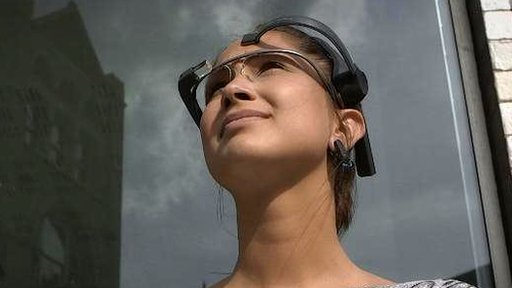By joining the shrewd glasses with an electroencephalography (EEG) headset, the product makes it conceivable to take a picture without moving a muscle.
London-based start-up This Place said the tech could be used in high-weight without hands circumstances -, for example, amid surgery.
It has discharged the Mindrdr programming for nothing with the expectation that designers will adjust it for different employments.
Google made it clear that it doesn’t help the application.
“Google Glass can’t read your psyche,” a representative told the BBC.
“This specific application appears to work through a different bit of pack which you append to Glass.
“We have not assessed, nor endorsed, the application so it won’t be accessible in the Glass application store.”
Google dispatched Glass in the UK a month ago.
The representative included: “obviously, we are constantly intrigued by catching wind of new applications of Glass and we’ve as of now seen some extraordinary exploration from a mixed bag of restorative fields from surgery to Parkinson’s.”
Fixation Polaroid
An EEG headset could be utilized to measure when certain parts of the mind demonstrate a more noteworthy level of movement.
For this situation, the Mindrdr programming screens when the wearer takes part in abnormal amounts of fixation.
Inside Google Glass’ “screen” – a little window that shows up in the corner of the wearer’s correct eye – a white even line is indicated.

As a client thinks, the white line ascends the screen. When it achieves the top, a picture is taken utilizing Glass’ inbuilt Polaroid.
Rehashing this methodology will then post it to a preconfigured social networking profile.
At present, Google Glass is controlled by either voice order – “alright Glass, take a picture” – or by tapping and swiping as an afterthought of the gadget.
“We needed to understand the genuine capability of Glass by permitting clients to control it with their brains,” said Dusan Hamlin, CEO of This Place.
“Presently, clients either need to touch it or utilization voice summons, which are prohibitive for some social circumstances and for clients with incapacities.”
‘More extensive world’
The association’s imaginative chief Chloe Kirton said: “While Mindrdr’s present capacities are constrained to taking and offering a picture, the conceivable outcomes of Google Glass “telekinesis” are immeasurable.
“Later on, Mindrdr could give those with conditions like bolted in disorder, serious numerous sclerosis or quadriplegia the chance to interface with the more extensive world through wearable engineering.”
EEG innovation is a developing zone.
Previously, the gear was restrictively extravagant, however numerous headsets are presently accessible for short of what £100.
Mick Donegan is the organizer of Specialeffect, a philanthropy which adjusts amusements controllers so they could be utilized by individuals with constrained portability.
He told the BBC that there had been a few issues with the dependability of EEG headsets previously, yet that he was energized by the potential outcomes of the Google Glass hack.
“It will mean somebody who presently has no control whatsoever, who can’t even control the development of their eyes – those individuals will have the capacity to utilize that framework. For me, that is the last outskirts,” he said,
He added that designers would need to make instinctive client interfaces.
“Rather than individuals controlling a cursor, in the event that you have a precisely outlined interface that experiences alternatives on a screen to pick – that is taking the heap of the client. That is what you’re searching for.”
Different applications have included feature recreations that endeavor to screen your enthusiastic state, and change the amusement encounter appropriately.
On the other hand, the engineering is in its early stages – early exploratory recreations have experienced an absence of exactness, prompting disappointment among players.


